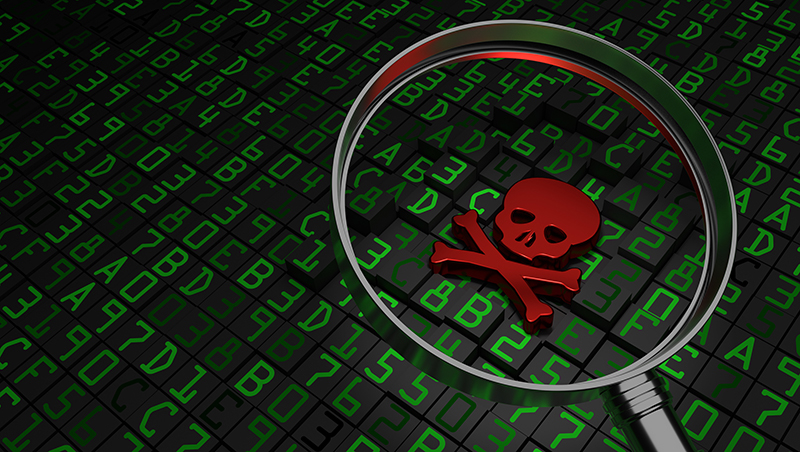Ransomware costs doubled in Q4 2019
Average ransom payments soared by 104% to $84,116, up from $41,198 in the quarter


The cost of ransomware attacks more than doubled in Q4 2019, the latest research from Coveware has concluded, following a significant increase in Ryuk and Sodinokibi breaches.
The firm’s Q4 Ransomware Marketplace report, which collects anonymous ransomware data from cases handled by its Incident Response Platform, found that the average ransom payment increased by 104% to $84,116, up from $41,198 in Q3. The median ransom payment for the quarter was $41, 179.
This doubling of the average reflects the diversity of threats attacking businesses, Coveware said, with variants such as Ryuk and Sodinokibi moving into the large enterprise space to in order to extort seven-figure pay-outs. Ryuk payments, for example, were found to have hit a new high of $780, 000 for impacted businesses during the period.
Smaller firms also continued to be at risk, with ransomware as a service variants such as Dharma, Snatch and Netwalker blanketing the small business space with a high number of lower demands – sometimes as low as $1,500.
These malicious software threats are evolving, too, with ransomware attackers moving beyond just encrypting business data and adding the exfiltration of information and threat of its release if the sum is not paid.
In terms of data recovery, Q4 saw 98% of companies receiving a working decryption tool upon payment. Of that pool, victims managed to successfully decrypt 97% of their encrypted data; a slight increase over Q3.
It was also found that the average downtime for affected firms increased to 16.2 days, up from 12.1 days previously, driven by a “higher prevalence of attacks against larger enterprises” that have more complex networks to restore, Coveware said.
Sign up today and you will receive a free copy of our Future Focus 2025 report - the leading guidance on AI, cybersecurity and other IT challenges as per 700+ senior executives
It also comes as a result of ransomware evolving and implanting more advanced features. In Q4, Ryuk actors introduced a “Wake-on-LAN” feature to turn on devices with a compromised network that were originally powered off.
Essentially, the addition allows attackers to infect machines during the night when the impact of security admins is limited, ultimately maximising the number of encrypted endpoints.
Ransomware as a service variant Sodinokibi was discovered to be the most prevalent type attack during the quarter, making up 29.4% of the overall total. Sodinokibi only allows a select number of affiliates to distribute the ransomware, of which usually possess specific skills to attack targets such as managed service providers.
Once an MSP’s remote monitoring and management tools (RMM) are compromised, attackers can push the ransomware to every client endpoint it manages. Sodinokibi also adapted its extortion tactics to include threatening the release of data, Coveware added.
RELATED RESOURCE

The 3 approaches of Breach and Attack Simulation technologies
A guide to the nuances of BAS, helping you stay one step ahead of cyber criminals
“Sodinokibi’s focus on MSPs results in large payouts, but relatively small victims sizes, as most companies that utilise MSPs are small enterprises with less than 200 employees,” the firm added.
Businesses fell foul to a number of ransomware attack vectors in Q4, with the top three consisting of Remote Desktop Protocol (RDP) compromise (57.4%), email phishing (26.3%) and software vulnerabilities (12.9%).
Dan is a freelance writer and regular contributor to ChannelPro, covering the latest news stories across the IT, technology, and channel landscapes. Topics regularly cover cloud technologies, cyber security, software and operating system guides, and the latest mergers and acquisitions.
A journalism graduate from Leeds Beckett University, he combines a passion for the written word with a keen interest in the latest technology and its influence in an increasingly connected world.
He started writing for ChannelPro back in 2016, focusing on a mixture of news and technology guides, before becoming a regular contributor to ITPro. Elsewhere, he has previously written news and features across a range of other topics, including sport, music, and general news.
-
 Microsoft wants to replace C and C++ with Rust by 2030
Microsoft wants to replace C and C++ with Rust by 2030News Windows won’t be rewritten in Rust using AI, according to a senior Microsoft engineer, but the company still has bold plans for embracing the popular programming language
-
 Google drops $4.75bn on data center and energy firm Intersect
Google drops $4.75bn on data center and energy firm IntersectNews The investment marks the latest move from Google to boost its infrastructure sustainability credentials
-
 15-year-old revealed as key player in Scattered LAPSUS$ Hunters
15-year-old revealed as key player in Scattered LAPSUS$ HuntersNews 'Rey' says he's trying to leave Scattered LAPSUS$ Hunters and is prepared to cooperate with law enforcement
-
 The Scattered Lapsus$ Hunters group is targeting Zendesk customers – here’s what you need to know
The Scattered Lapsus$ Hunters group is targeting Zendesk customers – here’s what you need to knowNews The group appears to be infecting support and help-desk personnel with remote access trojans and other forms of malware
-
 Impact of Asahi cyber attack laid bare as company confirms 1.5 million customers exposed
Impact of Asahi cyber attack laid bare as company confirms 1.5 million customers exposedNews No ransom has been paid, said president and group CEO Atsushi Katsuki, and the company is restoring its systems
-
 The US, UK, and Australia just imposed sanctions on a Russian cyber crime group – 'we are exposing their dark networks and going after those responsible'
The US, UK, and Australia just imposed sanctions on a Russian cyber crime group – 'we are exposing their dark networks and going after those responsible'News Media Land offers 'bulletproof' hosting services used for ransomware and DDoS attacks around the world
-
 A notorious ransomware group is spreading fake Microsoft Teams ads to snare victims
A notorious ransomware group is spreading fake Microsoft Teams ads to snare victimsNews The Rhysida ransomware group is leveraging Trusted Signing from Microsoft to lend plausibility to its activities
-
 Volkswagen confirms security ‘incident’ amid ransomware breach claims
Volkswagen confirms security ‘incident’ amid ransomware breach claimsNews Volkswagen has confirmed a security "incident" has occurred, but insists no IT systems have been compromised.
-
 The number of ransomware groups rockets as new, smaller players emerge
The number of ransomware groups rockets as new, smaller players emergeNews The good news is that the number of victims remains steady
-
 Teens arrested over nursery chain Kido hack
Teens arrested over nursery chain Kido hacknews The ransom attack caused widespread shock when the hackers published children's personal data
